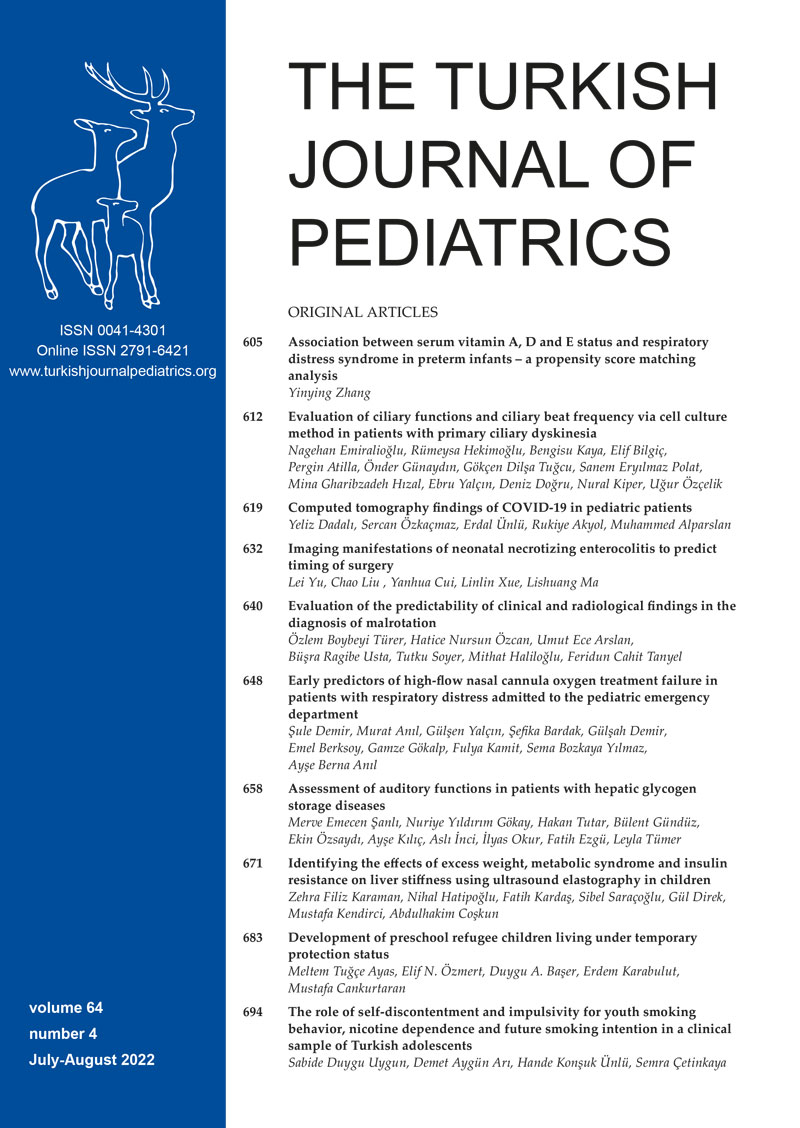Abstract
Background. The main goal of septic shock therapy is to keep hemodynamic parameters in the normal range for adequate tissue perfusion. Persistent lactic acidemia has increased mortality. We evaluate the association between vasoactive-inotropic score (VIS) and lactate clearance (LC) to predict mortality of septic shock in children.
Methods. This is a retrospective study of consecutive septic shock in children admitted to the pediatric intensive care unit. Vital signs, laboratory values, and VIS were obtained at admission and the 6th hour of hospitalization. LC was calculated at the 6th hour. The associations between LC and VIS were evaluated using univariate and multivariate analysis. Receiver operating characteristic analysis was used to describe the cutoff values of LC and VIS.
Results. Eighty-two children, age 82.3 ± 59.8 months, were included, with an overall lactate clearance of 29 ± 26%, and a mortality rate of 25.6%. The optimal cutoff value of LC was 20%. Children with LC ≥ 20% compared with LC < 20% had a lower VIS [(21.41 ± 8.36) vs. (27.48 ± 10.11) (p: 0.009)]. In multivariate comparison, PELOD score and VIS were significantly associated with 6-hour lactate clearance < 20% but VIS at 6 hours had a significant inverse relationship with LC < 20%. The cutoff for VIS was ≥ 16.2 for prognosticating the 6-hour LC and the high VIS group had a significantly lower LC and higher mortality ratio than the low VIS group.
Conclusions. High VIS was associated with lower lactate clearance and has been described as a predictor of greater mortality among septic shock in children.
Keywords: lactate clearance, mortality, pediatric, septic shock, vasoactive-inotropic score
Copyright and license
Copyright © 2022 The Author(s). This is an open access article distributed under the Creative Commons Attribution License (CC BY), which permits unrestricted use, distribution, and reproduction in any medium or format, provided the original work is properly cited.














